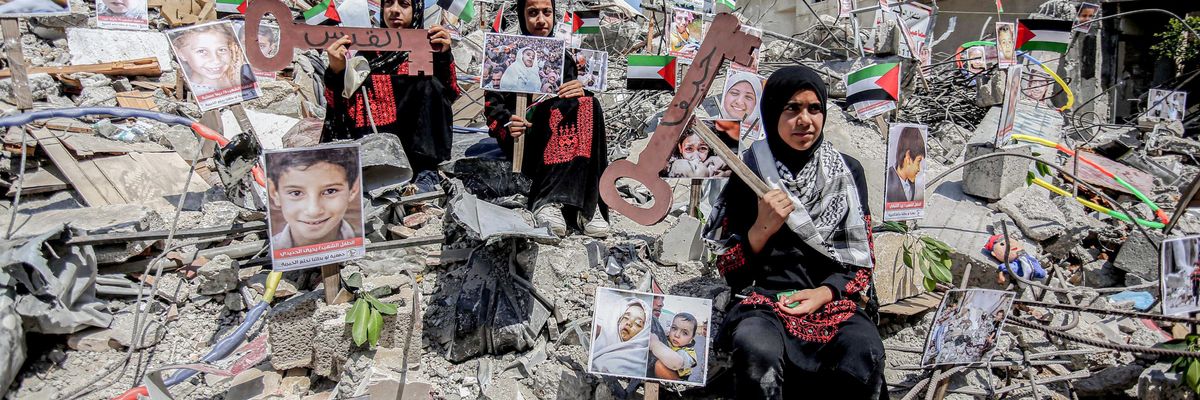A new report and interactive map published Thursday by a leading airstrike monitoring organization offer detailed insight into incidents of civilian harm caused by Israel Defense Forces' aerial bombardment of Gaza during the May 2021 Operation Guardian of the Walls assault on the Palestinian territory, as well as casualties resulting from militant rocket attacks on Israel.
"Despite repeated assurances to the contrary, it's clear that 'precision warfare' cannot sufficiently mitigate civilian harm."
The report--entitled "Why Did They Bomb Us?" Urban Civilian Harm in Gaza, Syria, and Israel From Explosive Weapons Use--was published by the U.K.-based airstrike watchdog Airwars. The group said the publication "comprehensively documents the civilian toll of recent Israeli actions in Gaza and Syria, as well as from Palestinian rocket fire into Israel" during the 15-day war.
The report's interactive map shows neighborhood-level data--including names, ages, relations, and locations--and allows users to navigate through 128 separate incidents of civilian harm in Gaza.
"Our latest study corroborates what we have found with other large-scale conflicts in Iraq, Syria, and elsewhere: Even technologically advanced militaries kill large numbers of civilians when attacks focus on urban centers," Airwars director Chris Woods said in a statement. "Despite repeated assurances to the contrary, it's clear that 'precision warfare' cannot sufficiently mitigate civilian harm."
"Stark differences in civilian deaths and injuries from Israeli actions in Syria and in the Gaza Strip clearly illustrate that the most significant driver of civilian harm remains the use of explosive weapons in populated areas," Woods continued.
Earlier this year, Common Dreams reported on a study by Action on Armed Violence that found 91% of people killed or injured when explosive weapons were used in populated areas worldwide from 2011 to 2020 were civilians.
"The single most effective way to reduce the number of civilians dying in warfare would be to restrict the use of such dangerous wide area-effect weapons on urban centers," Woods added.
Among the report's key findings:
- Across the three conflict areas, both the targeting approach and the population density of those areas bombed were critical drivers of civilian harm, leading to profoundly different outcomes for civilians;
- In Gaza between 151 and 192 civilians were likely killed as a result of IDF actions in May 2021, mostly in densely populated areas, with at least one-third of those killed being children;
- Between 15 and 20 civilian deaths in Gaza were additionally likely to have resulted from Palestinian rocket misfires;
- Ten civilians were directly killed in Israel in May 2021 resulting from Palestinian militant actions, with most casualties occurring when rockets penetrated Israel's Iron Dome missile defense system and reached cities and towns; and
- By comparison, an extensive eight-year IDF bombing campaign in Syria has had a far lower death toll--killing at least 14 and up to 40 civilians--due to a focus on exclusively military targets away from population centers.
The new report and map come days after United Nations High Commissioner for Human Rights Michelle Bachelet warned that conditions in Gaza "can fairly be characterized as disastrous."
"Severe movement restrictions and obstructions to people's access to essential goods and services, including specialized healthcare, generate immense suffering," she said amid the ongoing Covid-19 pandemic. "Only an end to the occupation can bring about lasting peace and establish the conditions in which the human rights of all can be fully respected."
